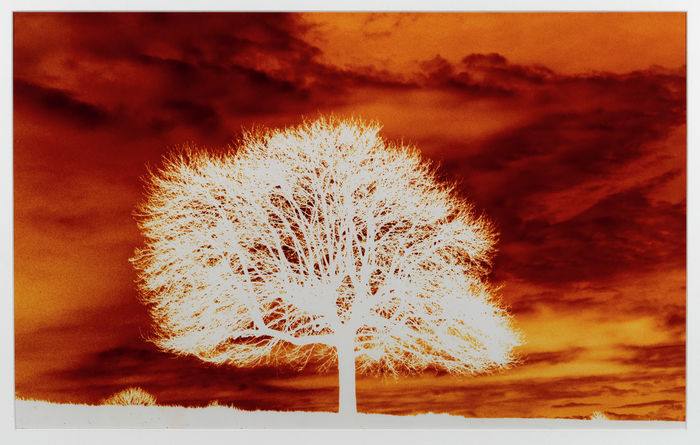Tell me what I’m looking at
How do we attribute meaning to the art around us? Anna Wythe muses on our lack of independence in the way we consume the aesthetic

I was standing in a black hole. Overhead, the dome pressed downwards like a tightening vice. “I’m here to pray,” I lied. A tour guide’s distant flamboyance barely ruffled the cathedral and its great silence. The lady behind the ticket counter smiled at me, “Don’t worry honey. Church will always be free.” My guilt was absolute.
The Cathedral of St. John the Divine is a tourist attraction. It sells t-shirts and gold temporary tattoos that say DIVINE. Unless you make your godly purposes known, or fake them, it also has a twenty dollar entry fee. In the summer heat of New York City, I wasn’t thinking about God or aesthetic experience but of the cooler temperatures promised by old stone.
Inside, having perjured myself, I wondered what it meant that the ways of engaging with that space had been so carefully delineated. At the entrance you decided whether you were a Christian worshipper or merely a cultural observer. I thought of Philip Larkin’s poem, “Church Going”. The speaker is clumsy in holy space, an initiate neither of architecture nor religion, yet drawn to it nevertheless as a “serious house on serious earth.” A ticket office would have sent him running for the hills.
"Sometimes you have to tune out the ancient significance of a building and think of it only as the dining hall, the location of fish and chips"
This conundrum reminded me of some of the questions around contemporary concept art. Its meaning often relies on its position in an art gallery. A QR code leading to a selfie, or a piece of fruit nailed to the wall: these installations challenge our sense of what art is, but their location still gives us a roadmap for how to think about them. When I came across them in the Frieda-Burda museum, they were encircled by people carefully consulting the guidebook. “Tell me how to look at it!”
Of course, we need these institutional storehouses of meaning. Often I’m so preoccupied by schedules and deadlines that, in some sense, I can’t see. An art gallery allows a reorientation. It is a big neon sign pointing to things worth looking at, and sometimes that’s necessary. Yet, an element of possibility is lost when experiences are too rigidly categorised. I don’t think that people are turning from religious experiences because they bought the tourist ticket, but perhaps they are not stepping into the unknown, the uncharted in quite the same way.
Cambridge is filled with Larkin’s “accoutred frowsty barns,” but our relation to these buildings is far from clear. Perhaps there are some who feel a complete harmony between their student experience and the founding purpose of the university, but this is surely rare. It can be difficult to live under the weight of tradition, and sometimes you have to tune out the ancient significance of a building and think of it only as the dining hall, the location of fish and chips.
"There must also be time to stumble upon things, to be drawn to a place without knowing why"
On the flipside, there’s no reason why the pub or the park shouldn’t provoke big thoughts and murky feelings. The problem with being told that certain meanings live in certain places is that it becomes harder to be open to experience outside of those contexts. I often think of it in terms of daily routines: half an hour for creativity, half an hour for pleasure, half an hour for the gods. Tunnel vision is probably inescapable for many of us, particularly during the Cambridge term, but there must also be time to stumble upon things, to be drawn to a place without knowing why.
Larkin writes that “someone will forever be surprising / A hunger in himself to be more serious, / And gravitating with it to this ground.” For him, there is a place for our storehouses of meaning, even, or perhaps especially, if we don’t know what exactly it is, and cannot easily relate to it. Larkin’s poem reminds me of the virtues of unease and awkwardness, that these can be the symptoms of possibility.
 News / Eight Cambridge researchers awarded €17m in ERC research grants27 December 2025
News / Eight Cambridge researchers awarded €17m in ERC research grants27 December 2025 News / Downing investigates ‘mysterious’ underground burial vault 29 December 2025
News / Downing investigates ‘mysterious’ underground burial vault 29 December 2025 Lifestyle / Ask Auntie Alice29 December 2025
Lifestyle / Ask Auntie Alice29 December 2025 Sport / Hard work, heartbreak and hope: international gymnast Maddie Marshall’s journey 29 December 2025
Sport / Hard work, heartbreak and hope: international gymnast Maddie Marshall’s journey 29 December 2025 Interviews / Meet Juan Michel, Cambridge’s multilingual musician29 December 2025
Interviews / Meet Juan Michel, Cambridge’s multilingual musician29 December 2025










